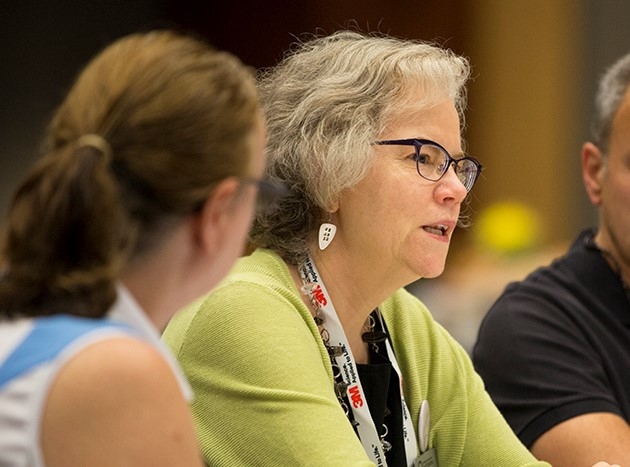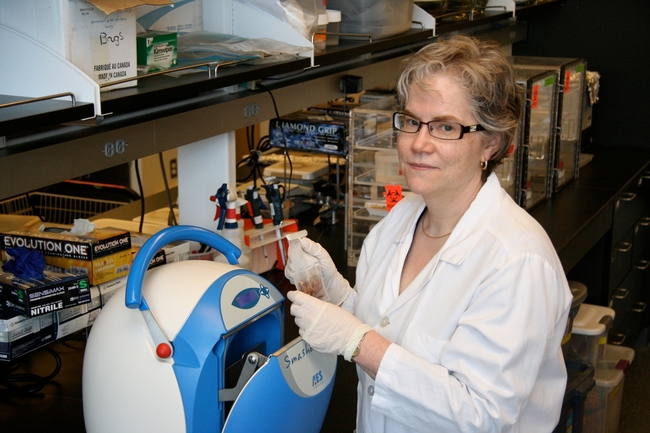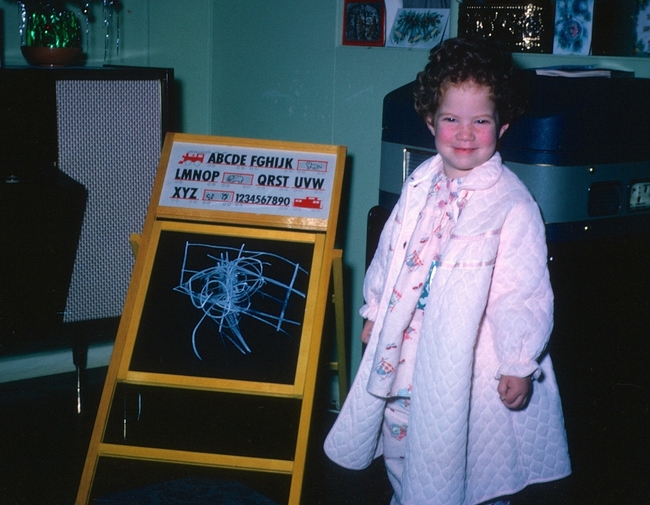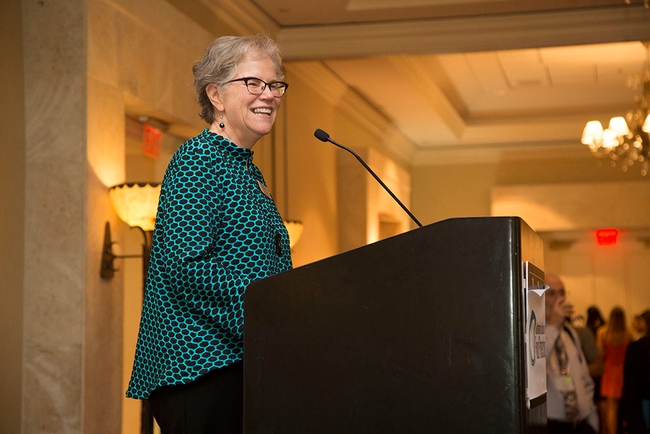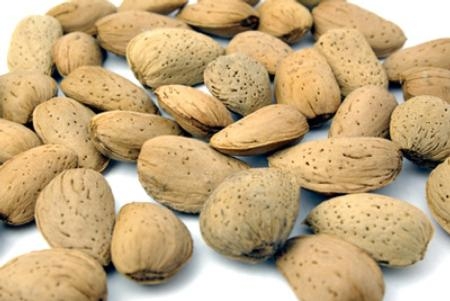Posts Tagged: Almonds
Five questions with food safety expert, new AAAS Fellow Linda Harris
Professor of Cooperative Extension shares career story, appreciation for UC Davis
After growing up in northern British Columbia, in a remote smelter town called Kitimat (“an 8-hour drive from the nearest McDonald's”), University of California Professor of Cooperative Extension Linda J. Harris embarked on an academic journey that crisscrossed North America and eventually led to her election as a Fellow of the American Association for the Advancement of Science.
AAAS, the world's largest multidisciplinary scientific society and publisher of the journal Science, recently announced the election of its 2021 class, which will be inducted during its annual meeting, Feb. 17-20.
In addition to Harris – a faculty member in UC Davis' Department of Food Science and Technology – four other UC Agriculture and Natural Resources affiliates will be inducted: Helene Dillard, dean of the UC Davis College of Agricultural and Environmental Sciences; Kathryn Uhrich, dean of the UC Riverside College of Natural and Agricultural Sciences; and UC Berkeley Professors Rodrigo Almeida and Paolo D'Odorico.
Harris, a Certified Food Scientist, recently shared her thoughts on the value of extension work, her contributions to the field, UC Davis' support for women in academia, and the arc of her career journey.
How did you get your start in food science and microbiology?
I was interested in science at an early age. As an undergraduate student at the University of Victoria in Victoria, B.C., I enrolled in biochemistry at the suggestion of my high school biology teacher. In my second year, I switched to the University of Alberta in Edmonton, Alberta and decided to review the course catalog – a paper version! When I got to the section on Food Science, the applied nature of the field just sounded right and I never looked back.
However, I didn't do particularly well in microbiology as an undergraduate student – too much memorization for me. At the end of my B.S. I was ready for a job in the food industry and took the very first job I was offered – ironically enough as a dairy microbiologist in a quality control lab. Thankfully, that job opened my eyes to the possibilities in microbiology. What was memorization turned into something I learned through doing and I was hooked.
Two years later, I was ready to go back to school and contacted a professor of food safety microbiology at the University of Alberta who fortunately had funding for me. During my M.S. degree in food microbiology, he encouraged me to pursue the Ph.D. – which was not something I had ever considered – and that led me to leave Canada and head to North Carolina State University and a Ph.D. in microbiology in the Food Science Department, where I worked on a project related to the fermentation of sauerkraut.
I did have one publication related to food safety during my time at NC State, and when I took my first faculty position back in Canada [University of Guelph in Ontario] I continued to work in food safety, mostly with meat and meat products.
I am so glad that I saw the advertisement for my current position and that I followed my instincts to apply for the job. The opportunities to grow professionally and to work in the food safety area at UC Davis, within the Cooperative Extension network in California, and with collaborators across the U.S., and around the world, have been enormous, and I am extremely grateful for the path that led me here.
February 11 is the United Nations-designated “International Day of Women and Girls in Science.” How has UC Davis supported women in your scientific field?
My career in STEM [science, technology, engineering and math] has been very rewarding and many of the gender barriers I faced early on have been addressed. I feel very fortunate to have landed at UC Davis and I am thankful that there is a long history of addressing these barriers at this institution.
When I was hired in 1996, the Department of Food Science and Technology was about 25% women and both the department chair and dean of the college were women. I had never been in a department or college with so many women faculty, including in positions of leadership. It was a very important consideration in my move. Today our department is 50% women and I proudly served for five years as the second woman department chair, from 2016 to 2021.
As a first-generation university graduate raised by a single mother, you have a unique perspective in encouraging young people on their path toward a STEM career. What advice do you have for them?
To those contemplating a career in STEM, I would say: be open to new opportunities and adventures – you never know where they may lead you. Get involved in leadership in any capacity you can from student organizations or around other things that interest you. Skills that you learn with these types of activities will be invaluable to your career.
I am very much an introvert and had to work hard to overcome my fear of public speaking. In addition to leadership roles in student clubs, I joined Toast Masters while working on my Ph.D. These activities had a huge impact on building my confidence and helped influence my career choices.
In the AAAS Fellows announcement, it says you were elected for “contributions to the field of food safety microbiology, especially related to control of Salmonella and other pathogens in low-moisture foods and fresh produce.” Is that your proudest achievement in the field?
I am most proud of the work described by that short statement especially as it applies to California-grown commodities. I would say that my laboratory is best known for work with the tree nut industry – almonds, pistachios and walnuts, as well as a range of types of fresh produce grown in this state.
My laboratory has worked to understand behavior, movement, prevalence, and especially control of foodborne pathogens like Salmonella during production in the field through harvest and postharvest handling all the way through to consumer practices.
I have been fortunate to have many terrific state, national and international collaborators and an outstanding group of people working in my laboratory as we set the foundation for some of the food safety research in tree nuts and produce. It has been most gratifying to watch the significant growth in these fields of investigation, especially with a new generation of scientists that span the country and beyond.
Another “hat” you wear is UC Cooperative Extension specialist. How have you contributed to food safety knowledge and practices in our communities?
I think you will see that my “hats” are not that different. The research from my laboratory has provided the foundation for several commodity-based, food-safety risk assessments – for almonds, pistachios, and walnuts. And these, in turn, have been used in support of regulations or helped guide implementation of safer food industry practices. Our research has also informed several publications aimed at consumer handling of fresh fruits and vegetables and has been cited in regulations pertaining to fresh produce safety. It is gratifying to see our research being used.
My research and extension work are very integrated. One feeds the other. Because I have been able to interact with stakeholders (especially integral to my position as a Cooperative Extension specialist), I have been able to understand firsthand some of the pressing food-safety issues and challenges in California. These stakeholder interactions have largely formed the basis for most of my research and extension grant proposals over the years. The collaborations that have resulted from extension activities have opened doors and access to many unique opportunities for sample collection and research exploration.
What's shakin'
Harvest time in California is almost a year-round affair in one area or another: winter lettuce and spinach in Salinas, early spring strawberries along the South Coast, summer squashes, herbs, and tomatoes galore, hays and grains as long as the dry season lasts, and countless other food and fiber crops through the year.
Like grapes, walnuts, apples and olives, the almonds get their turn in autumn. On the right day, you can watch as a Rube Goldberg-like machine rolls through a local nut orchard, grabbing hold of tree trunks one by one and shaking them so hard it'll rattle your bones, but just hard enough to knock loose practically every nut on the tree without damaging its trunk. A sweeper follows next, gathering up nuts in their rough hulls from the clean orchard floor, blowing them clean of debris, and dumping them into harvest bins. Simple as that. But 60 or 70 years ago this work was all done by hand, and the harvest that's now completed in a day could take a week or more.
First the farmers would clean the orchard floor and spread a big canvas sheet under a tree, wide enough to catch anything that could fall from its canopy. One or more members of the harvest crew then took up long, slender poles and knocked loose the harvest-ready nuts, still in their hulls. Nuts rained dusty onto the workers' wide-brimmed hats and the wide-spread sheet. A skilled harvester could work the long, willowy pole with a fly fisherman's skill to strike the last few stick-tight nuts, one by one, and down they'd fall. Each nut meant another ounce or so, which added up to pounds and eventually dollars from the buyer or co-op. Then as now, you don't do this sort of thing just for your health.
Nuts from the sheet were raked and shoveled onto a sled and dragged out of the orchard. While the harvest crew set to work on the next tree, others would pick debris out of the sled, scoop the cleaned nuts into big burlap sacks, stitch them shut, and load them onto a wagon for a trip to the railroad and on to market.
Old times and new. This year, California's largest almond-growing cooperative, Blue Diamond Growers, celebrates its 100th anniversary. You can learn more about the crop's history in California at a special centennial website.
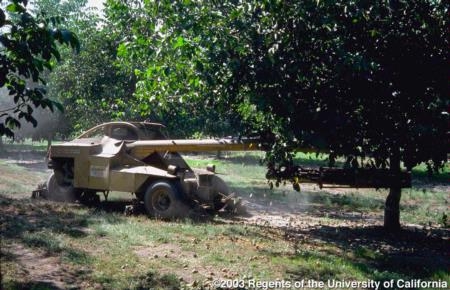
A nut tree shaker.
Nuts contribute protein, fiber and healthy fat to diet
Two free publications on nuts have recently been published by ANR — Nuts: Safe Methods for Consumers to Handle, Store, and Enjoy and Nuts: Safe Methods for Home Gardeners to Harvest, Store, and Enjoy.
Both publications outline the nutritional benefits of eating nuts, including information from the FDA affirming that:
- Including nuts in a diet low in saturated fat and cholesterol may help reduce the risk of heart disease.
- Almonds, pecans, pistachios, and walnuts contribute to health through their protein, dietary fiber and unsaturated fat.
The consumer publication includes a handy table outlining optimal freezer and refrigerator storage times for a variety of nuts as well information on nut allergies, nutrition and resources for recipes.
Home gardeners with nut trees will find useful information on harvest times and methods, hulling and drying procedures, safe handling procedures, storage, and nutrition information for almonds, chestnuts, pecans, pistachios and walnuts.
Inside both publications is a discussion of recent bacterial outbreaks in nuts and the steps producers have taken to minimize the risk of exposure to consumers.


